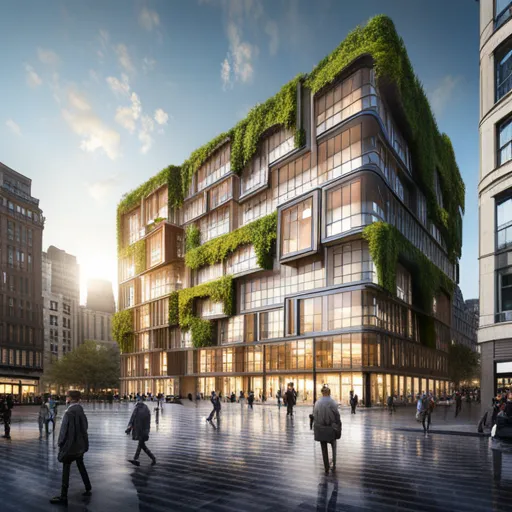
In an era of escalating energy crises and stringent climate change goals, the need to transition towards more energy-efficient buildings has never been more urgent. A significant portion of global greenhouse gas emissions derives from existing buildings, making them a critical focus point in the fight against climate change. In the wake of these challenges, retrofitting, or upgrading existing buildings for enhanced energy efficiency and decarbonisation, becomes a vital solution. This article sheds light on the process, benefits, and future of retrofitting commercial buildings to meet carbon reduction targets.
The Imperative of Retrofitting
Existing commercial buildings account for a significant portion of global greenhouse gas emissions. In the US alone, these structures consume around 40% of total energy and 70% of electricity produced. To mitigate real estate’s carbon footprint, it’s crucial to retrofit dated buildings into high-value decarbonized assets. This process not only reduces carbon emissions but also enhances a building’s energy efficiency.
Note: Retrofitting can be a costly process upfront, but it pays off in the long run. With new, streamlined technology operating at optimal performance, building owners can recover the initial costs through immediate savings.
The Retrofitting Process
Retrofitting is not a one-size-fits-all solution. Each building has its unique inefficiencies that need to be identified and rectified. A building’s retrofit suitability is often evaluated based on five criteria:
- High energy costs
- Decarbonization goals
- Mechanical and construction inefficiencies
- Availability of rebates and financial incentives
- Demand for alternative energy sources
The first step towards retrofitting is conducting a thorough assessment of the building to identify its inefficiencies. This assessment includes an energy model detailing the building’s energy usage patterns. Based on this model, necessary changes are planned and implemented to achieve project goals and enhance the building’s energy efficiency.
Technological Interventions in Retrofitting
Technological implementation is a crucial part of the retrofitting process. Some common changes include installing LED lighting upgrades, low-flow water fixtures, better insulation, and sealing and weatherproofing the building’s envelope.
Among the most effective but complex upgrades is the installation of heat pump-based space and water heating systems. These systems, which include geothermal and air-source heat pumps, are highly efficient and significantly more effective than standard combustion-based or electrical resistance systems. They effectively reduce onsite carbon emissions from fossil-fuelled heating systems and deliver the required heat at high efficiencies.
Another notable decarbonization solution is the integration of solar photovoltaic (PV) systems. Solar power, being clean, abundant, and easily accessible, can supplement or offset a building’s energy usage. Excess energy generated can be redirected to the power grid, serving the surrounding community.
Role of Energy Management Systems
Once the new technology is in place, it’s imperative to implement an energy management system to monitor the building’s operational efficiency. These systems provide real-time data on building performance, enabling owners to quickly identify problems, equipment issues, and potential for further efficiency and savings.
Benefits of Retrofitting
Retrofitting offers numerous benefits beyond combating climate change. For tenants and property owners, the advantages include immediate utility savings, reduced maintenance costs, and enhanced comfort due to improved temperature, humidity, and airflow control.
The health and well-being of a retrofitted building create a ripple effect, making the building healthier for both tenants and the environment. Retrofitting not only extends a building’s lifespan but also adds value as the real estate industry begins to tie a building’s value to its environmental impact.
The UK Context: Retrofitting and Carbon Reduction
The UK’s commitment to net-zero emissions by 2050 has intensified the focus on retrofitting. With retrofitting rates needing to triple from barely 1% today to at least 3% of existing buildings per year, an estimated £3 trillion will be required in the office sector alone to meet decarbonization targets.
Key technological interventions in the UK context include Voltage optimisers, coolnomix control systems, and M2G control systems. These systems play a significant role in reducing energy consumption and costs.
Solar energy and heat pump systems are other prominent solutions in the UK’s retrofitting landscape. Heat pumps, in particular, are gaining popularity due to their ability to provide efficient heating and cooling solutions in diverse climates.
Conclusion
Retrofitting existing buildings is an essential step towards a greener future. By integrating renewable energies, enhancing energy efficiency, and reducing carbon emissions, retrofitting paves the way towards achieving carbon reduction targets. It’s not merely an environmental necessity but a smart, future-ready business strategy offering substantial economic benefits. As the demand for decarbonization rises, retrofitting is poised to become a standard practice, making our built environment healthier, sustainable, and future-fit.